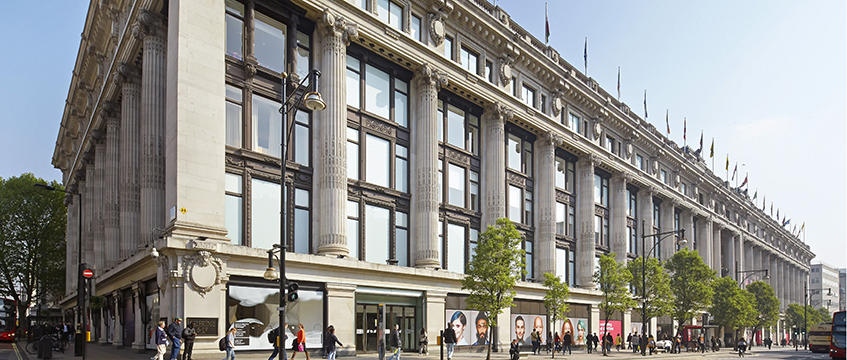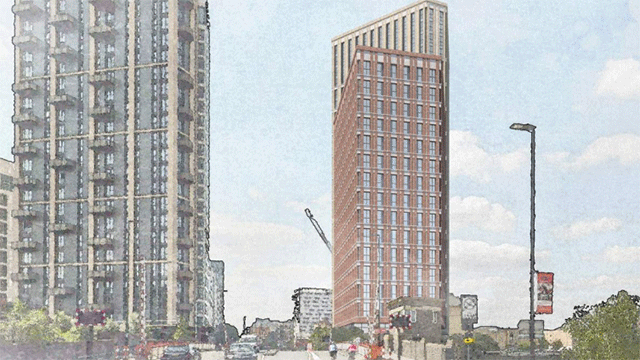South Korea’s largest institutions have returned to the London office market with almost £1bn committed so far this year as they seek to take advantage of a “window of opportunity” in the property cycle.
Samsung SRA, the real estate investment arm of the Korean conglomerate, completed a £315m deal in January to buy 200 Aldersgate, EC1, through Savills Investment Management, for a net initial yield of around 4.5%.
Seoul-headquartered investment firm Mirae Asset Financial Group, one of Asia’s largest independent financial services groups, made its debut UK investment last month through its investment firm Mirae Asset Daewoo, with the £248m acquisition of Cannon Bridge House, EC4.
The building was bought from Blackstone in partnership with another South Korean investment bank, NH Investment & Securities, and was supported by London-based real estate investment manager The Valesco Group and Korean asset manager FG Asset Management. The price reflects a net initial yield of 5.2%.
Mirae’s fund management arm, Mirae Asset Management, has since been linked to Blackstone’s 20 Old Bailey, EC4, which has been placed under offer for more than £340m, a net initial yield of circa 4%.
The deals mark a return to the market for South Korean investors, who deployed a significant amount of capital in London five years ago, with £754m invested in 2013, but have since been subdued (see JLL data in chart below).
There was no South Korean investment in UK real estate at all in 2016. The institutions which dominate investment activity from the region typically invest in five-year cycles, so some which invested significantly in 2013, such as Hanwha with its joint acquisition of Ropemaker Place, EC2, from British Land for £472m, are now seeking to realise their returns.
Hanwha has instructed agents to seek offers in excess of £700m for the building. Others, such as Mirae, have been waiting for the right opportunity to enter the London market.
Why now?
Shiraz Jiwa, chief executive of London-based Valesco, which has formed a strategic partnership with Korea’s FG Asset Management to bring South Korean capital to Europe, says there is a 6-9-month “window of opportunity” that exists right now in London where assets can be captured at levels that provide risk-adjusted returns at levels that South Korean investors like to see.
His clients are looking to typically invest £200m-£500m on a single asset and he believes London currently offers a “dislocation in pricing” which is creating some opportunities that didn’t exist last year.
Jiwa says one reason Cannon Bridge House appealed to Mirae Asset Daewoo and NH Investment & Securities was because the capital value was below neighbouring buildings, with rents currently around £46 per sq ft, with nearby rents reaching up to £80 per sq ft.
“There is a strong income and asset management upside,” Jiwa says. “We bought at a 5.2% net initial yield with a weighted average unexpired lease term of more than 12 years, high-quality tenants and a mix of financial services and TMT. I’ve never seen anything as unique in terms of upside potential.”
At the same time, the US and mainland European markets are becoming less appealing.
“The US market has become less appealing for Korean investors because interest rates are higher and there are more competitive and higher lending rates,” Jiwa says.
“Yield compression in mainland Europe has meant that in gateway cities in Germany and France returns have been compressed, making it less exciting. All this points to London.”
It is common for Korean institutions to club together on acquisitions, partly to spread risk.
Jiwa says: “What sometimes happens is a conglomerate, asset management or private wealth division will have the ability to receive some syndicated portion of equity they can syndicate to retail investors, so private individuals can access the likes of a Cannon Bridge House.”
What requirements do South Korean investors have?
Emma Steele, associate director in Savills’ cross-border investment team, says Korean investors are driven by a few requirements: achieving a 6% cash-on-cash return, a fairly long weighted average unexpired lease term and a recognisable tenant.
She says they were absent from the market in 2016 after being “spooked” by the EU Referendum result and were attracted to the “cheap debt story” in mainland Europe.
Rasheed Hassan, director of Savills cross-border investment, adds: “Since Brexit there has been some outward yield movement [on London office assets]. Debt has also got a bit cheaper, so that elusive 6% cash-on-cash return has re-emerged. Also, Brexit has not had as adverse an effect on the UK as was suggested by commentators.”
In the UK, South Korean investors are finding their target return in cities outside London, particularly Birmingham, Edinburgh and Manchester.
In November last year, a South Korean investor advised by Knight Frank Investment Management acquired the 176,611 sq ft Bristol office building, 10 Canons Way, Harbourside, for £95.5m – a net initial yield of just over 5%.
In addition to offices, they are also exploring alternative sectors such as education, retail warehousing, student housing and healthcare.
In June last year, KFIM completed a £56m investment in a BAE Systems-let warehouse in Crewe, its first for Korean investors
KFIM chief executive Kevin Aitchison, says: “We represent what I would call typical institutional investors and they tend to be driven by income.
“They always use leverage so really they are looking for assets that which have got 10-plus years’ income to really strong covenants. For offices, London is their number one location but they are mature enough to know there is value elsewhere.”
Future opportunities
Aitchison expects to see more Korean capital investing in the UK this year.
“While the cost of borrowing is cheaper in mainland Europe, assets are more expensive,” he says.
“An asset in Milan that was quoting 3.3% would be 4.25% or 4.5% if it was in London. (It)also a more liquid and transparent market where Koreans speak the language.”
In central London, there is currently less competition for the larger office assets from Hong Kong investors due to the strength of the pound against the Hong Kong dollar returning to pre-Referendum deals.
There is less stock available – down from £6bn in the City in Q4 to £3.8bn this month, according to Knight Frank.
However, a number of large assets that were withdrawn from the market last year, such as Plantation Place, EC3, could still be available off-market.
Chris Brett, CBRE’s head of international markets, says: “Their interest in the UK never really went away and if you look at the past 12-18 months there’s been quite a few deals done by Koreans in the UK regions.
“They’ve still been bidding [on London assets] but what we have found is that with the interest rate environment in the US starting to rise, the UK is becoming more appealing.”
Investment appetite is also likely to be supported by a growing real estate fund management industry in Korea, which is expected to at least double in the next 10 years.
Richard van den Berg, M&G Real Estate Asia Property fund manager, says: ““Korean interest in investing overseas will continue. Pension funds are growing a lot, liquidity in the local market is tight and they need to diversify to achieve higher returns so they will be moving step by step into higher-risk investments.
“Traditionally, they were only looking into direct investments or specificed pools, where it is necessary for them to access market. Now they are considering blind pools but only with global brand names, with the big global fund managers.”
What do you need to know if you’re doing a deal with a Korean investor?
Richard van den Berg, M&G Real Estate Asia Property fund manager
Sophisticated investors
“Korean investors are already quite sophisticated international investors, they understand risk, market dynamics and pricing. They will be looking at gateway cities and making a decision about whether pricing is in line with their target returns. Brexit risk to leasing demand will need to be factored into pricing.”
Flexibility
“They can be flexible on tactical moves [to achieve their investment objectives] so they are not fixated on types of asset or certain types of risk if they can adjust it to meet annual targets.”
Due diligence
“They do have very long due diligence and approval processes and have a large number of investment committees so it will not be fast.
Fees
“They will negotiate fees intensively. They are experienced and smart and know the market and they will not be overpaying, especially on fees.”
Demands
“Institutional pension funds have very detailed reporting requirements in Korea and they will often request information at short notice.
Blind pools
Traditionally they were only looking into direct investments or specified pools. Now they are considering blind pools but only with global brand names, with the big global fund managers.
Korean investor to watch: Mirae
Mirae Asset Financial Group is one of Asia’s largest independent financial services groups.
Founded in 1997, the group is credited with creating the asset management industry within Korea.
The group operates through a number of subsidiaries, including the fund management unit Mirae Asset Global Investment and investment banking firm Mirae Asset Daewoo, which has invested in Cannon Bridge House.
Mirae Asset Global Investment has had a UK office at 4-6 Royal Exchange, EC3, since 2012. However, it is not this office which is investing in real estate.
The London office is directing enquires about real estate investment to Korea-based Mirae Asset Global Investment senior manager, Sun Young (Sunny) Kim.
Mirae Asset began investing in global real estate in 2006 with the investment to build the Mirae Asset Tower in Pudong, Shanghai.
It has since bought trophy office buildings in the US, Australia and Brazil. Its first UK investment, through Mirae Asset Daewoo, was Cannon Bridge House last month.
To send feedback, e-mail Louisa.Clarence-Smith@egi.co.uk or tweet @LouisaClarence or @estatesgazette











